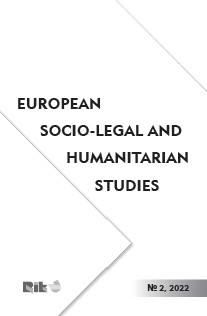HUMAN RIGHTS BEYOND THE IRON CURTAIN: CONCEPTION OF SOVEREIGNITY AND INTERNATIONAL LAW
HUMAN RIGHTS BEYOND THE IRON CURTAIN: CONCEPTION OF SOVEREIGNITY AND INTERNATIONAL LAW
Author(s): Marianna NapolitanoSubject(s): International Law, Human Rights and Humanitarian Law, Government/Political systems, Politics and religion, EU-Legislation, Comparative Law
Published by: Editura U. T. Press
Keywords: Soviet Union; Russia; human rights; Europe; sovereignty; State; Church;
Summary/Abstract: The aim of this analysis is exploring the relationship of the Soviet Union first and of the Russian Federation then with European and international human rights norms. It aims to explain the reasons for the delay in the reception and application of this jurisprudence in the Russian system of laws, the reasons why analyzing Russia’s relationship with them means considering the concept of sovereignty and the role of the state and the church in promoting and defending it. The analysis is conducted from a political and historical perspective and traces Russia’s relation with major international human rights conventions from the Soviet Union to the beginning of Vladimir Putin’s third term (2012). Central turns out to be the concepts of multiple modernities and of multiple moralities according to which the values system of a country develops in close relation to its history and culture. Talking about the recognition of human rights in Russia indeed means also considering the significance of the defense of so-called traditional values, their connection with the real heritage of the Soviet past, and that with tradition understood as predanje as well as it interests the heritage of the Christian tradition. In fact it is in this defense of the country’s history that the state and the church built their new relationship after the end of the Soviet Union. Proceeding from the idea of parallel trajectories in the process of modernization, which implies that not to all modernities can be applied the same model, it seems important to wonder what is the result of the encounter between the normative principles of these other cultural programs and the potentially universal normative principles of the Western model.
Journal: European Socio-Legal and Humanitarian Studies
- Issue Year: 2022
- Issue No: 2
- Page Range: 116-125
- Page Count: 10
- Language: English

